








































See Also
See Again
Secrets behind famous monuments
- Many historical monuments and landmarks around the world still hide many mysteries, but we are lucky enough to have discovered amazing facts about many of them. Click through and get to know surprising facts about some of the world's most iconic landmarks.
© iStock
0 / 41 Fotos
Westminster Abbey (England) - Britain's largest church was left with a dirty yellow patina due to a thick smog that hit London in 1952. It took 20 years of restoration to get rid of the toxic layer.
© Shutterstock
1 / 41 Fotos
Big Ben (England) - For some 160 years, pennies have been stacked on the pendulum to keep London's iconic clock accurate.
© iStock
2 / 41 Fotos
Statue of Liberty (USA) - The famous New York City landmark wasn't always green! The statue was originally copper-colored, but turned green with oxidization over the years.
© Shutterstock
3 / 41 Fotos
Angkor Wat (Cambodia) - The now uninhabited and mysterious Angkor Wat was inhabited for centuries by Buddhist monks and villagers. Nowadays it's one of the most-visited wonders of the world.
© Shutterstock
4 / 41 Fotos
Angkor Wat (Cambodia) - When European colonizers discovered the temples in the 19th century, they didn't believe that it had been constructed by the Khmer people. The 200 temples were also arranged so that travelers passing could only see three of them.
© Shutterstock
5 / 41 Fotos
Empire State Building (USA) - Tourists can visit the top of the imposing New York monument, but are told it ends on the 102nd floor. In reality, there is one more floor—the 103rd—where there is a small room with a balcony. Only VIPs and staff can go there.
© Shutterstock
6 / 41 Fotos
Baalbek (Lebanon) - The city ruins were part of a complex temple. The curious thing is that the Romans didn't have the technology to move the stone blocks, which weighed up to a thousand tons. These stones can be found on the temple's base.
© Shutterstock
7 / 41 Fotos
Baalbek (Lebanon) - Its likely that the Egyptians built the temple foundations, and some believe that it may have been used as the base for the Tower of Babel.
© Shutterstock
8 / 41 Fotos
Bolshoi Zayatsky Island (Russia) - The Solovetsky islands have spiral labyrinths that can cause a person to get lost or exit through the same place they entered. Some researchers have speculated that the spiral construction was built for kids to play in.
© Shutterstock
9 / 41 Fotos
Dolmen (Russia) - On the mountains' slopes there are small houses made of flat stones. The facades have holes with a cork lid. The stone slabs weigh tons and they're adjusted to each other with such precision that it's not possible to insert a leaf between them.
© Shutterstock
10 / 41 Fotos
Terracotta Army (China) - The sculptures date from approximately the late 3rd century BCE. They were rediscovered in 1974 by local farmers in the Lintong District. The statues include warriors, carriages, and horses—and the most amazing part? Each soldier has a different face!
© Shutterstock
11 / 41 Fotos
Great Sphinx of Giza (Egypt) - While we all know what the Great Sphinx looks like today, it turns out that it used to be painted different colors! Archaeologists think that the face used to be red, and the body used to be yellow and blue.
© Shutterstock
12 / 41 Fotos
Great Sphinx of Giza (Egypt) - The Great Sphinx of Giza was buried up to its neck in sand from around 1400 BCE, until it was excavated between 1925 and 1936.
© iStock
13 / 41 Fotos
Trinity House Lighthouse (Gibraltar) - Legend has it that a lighthouse keeper disappeared and bloodstains were found on the lighthouse's steps. The remains of his body were found 100 years later in the area around the lighthouse.
© Shutterstock
14 / 41 Fotos
Easter Island (Pacific Ocean) - The great mystery of Easter Island is the 887 giant stone statues, called Moai, which are spread throughout the island. Their purpose and origin are unknown.
© Shutterstock
15 / 41 Fotos
Easter Island (Pacific Ocean) - It's believed that the statues were created to honor important ancestors, hence the form of human heads.
© Shutterstock
16 / 41 Fotos
Great Wall of China (China) - One of the most iconic and ancient monuments in the world that also hides a dark secret. It's estimated that during its construction, about 400,000 civilian builders died and were then buried in the area. Consequently, the wall is known as the longest cemetery on Earth.
© Shutterstock
17 / 41 Fotos
Great Wall of China (China) - For years, local villagers have been removing bricks from the Great Wall of China. They use them as building materials and sell them to tourists.
© iStock
18 / 41 Fotos
The Fallen Angel (Spain) - The sculpture that depicts Lucifer falling from Heaven is located in Madrid, and is exactly 666 m above sea level.
© iStock
19 / 41 Fotos
Mount Rushmore (USA) - The monument to the four American presidents carved on Mount Rushmore has a secret chamber behind the hairline of Abraham Lincoln.
© Shutterstock
20 / 41 Fotos
Washington National Cathedral (USA) - One of the details on the Washington National Cathedral is actually Darth Vader! The winner of a National Geographic magazine competition got his design sculpted and carved onto the Cathedral.
© Public Domain
21 / 41 Fotos
Newgrange (Ireland) - During archaeological excavations, this perfectly circular prehistoric tomb was discovered. It is older than the Egyptian pyramids.
© Shutterstock
22 / 41 Fotos
Petra (Jordan) - Petra and its monumental buildings are hidden 900 m (2,953 ft) above sea level. It is unknown how the sculptors built it without scaffolding.
© Shutterstock
23 / 41 Fotos
Pyramids of Giza (Egypt) - Some theories say that the three pyramids of Giza are precisely aligned with the Orion constellation. The stars are associated with the Egyptian god of rebirth.
© Shutterstock
24 / 41 Fotos
Abu Simbel Temples (Egypt) - In the 1960s, to avoid getting flooded by the Nile River's raising waters, the ancient temples were relocated to higher ground. This was necessary or they would have been submerged during the creation of Lake Nasser, the massive artificial water reservoir.
© iStock
25 / 41 Fotos
Gate of the Sun (Bolivia) - The beautiful portal carved in rock consists of a single and imposing block that weighs around 13 tons. It's believed that the door was part of a larger building, which could have been located on the Pyramid of Akapana, where several pieces made from the same material can be found.
© Shutterstock
26 / 41 Fotos
Sacsayhuamán (Peru) - Sacsayhuamán is a walled city built more than 3600 m (11,811 ft) high. The mystery lays in its perfect construction. The blocks are so precisely fitted that not even a sheet of paper fits between them.
© Shutterstock
27 / 41 Fotos
Stonehenge (England) - Some think that the complex was a cemetery, at least during the period leading up to the addition of larger stones to the monument. This is because 56 graves containing the cremated bodies of at least 64 people who lived during the Neolithic period were found on the site.
© Shutterstock
28 / 41 Fotos
Taj Mahal (India) - The great Indian temple is actually a tomb that was built by Emperor Shah Jahan in honor of his late wife Arjumand Bano Begum, who died giving birth to his 14th child.
© Shutterstock
29 / 41 Fotos
Tikal (Guatemala) - These pyramids are known as the City of Voices. There are several theories about the original use of the structures. Some have called them religious buildings, others research centers, and some think they're cemeteries.
© Shutterstock
30 / 41 Fotos
Timbuktu (Mali) - The Malian city was founded in the year 1100 CE with the intention of serving as a market due to its proximity to the Niger River. Caravans would bring salt from the Sahara mines to exchange for gold and slaves brought from the south. In 1330, it was part of the powerful Mali empire.
© Shutterstock
31 / 41 Fotos
Eiffel Tower (France) - In the past, people would use Paris' iconic building to commit suicide. It's estimated that more than 350 people have climbed the tower to throw themselves from it. The government reinforced security measures in order to avoid this from happening again.
© Shutterstock
32 / 41 Fotos
Eiffel Tower (France) - The most famous monument in Paris is actually painted in three shades: it's darker at the bottom and lighter at the top.
© Shutterstock
33 / 41 Fotos
Tower of Pisa (Italy) - The Italian monument has leaned since it was built in 1173. Because it was built on sand and clay, it didn't have enough stability and developed its signature angle.
© Shutterstock
34 / 41 Fotos
Bridge of Sighs (Italy) - One of Venice's historical landmarks was actually built to transfer prisoners from the interrogation room to prison. The bridge bears this name because of the sighs prisoners released during the crossing.
© Shutterstock
35 / 41 Fotos
St. Peter's Basilica (Vatican) - St Peter's Basilica was mainly funded by selling indulgences. Forgiveness and salvation were big business.
© iStock
36 / 41 Fotos
Romanian Athenaeum (Romania) - The Bucharest landmark has a circular shape because it was built on the foundation of a former circus.
© iStock
37 / 41 Fotos
Largo di Torre Argentina (Italy) - The square in Rome where Julius Caesar was assassinated is now a cat sanctuary. The square is home to over 100 stray cats.
© iStock
38 / 41 Fotos
Itsukushima (Japan) - Itsukushima is a sacred place. In order to maintain its purity, since 1878, no deaths or births have been allowed near it.
© iStock
39 / 41 Fotos
London Bridge (USA)
- The original London Bridge was slowly sinking into the river Thames, so in 1967 it was sold to an American entrepreneur. The bridge was relocated to Lake Havasu City, Arizona. See also: The world's cities: then and now.
© iStock
40 / 41 Fotos
Secrets behind famous monuments
- Many historical monuments and landmarks around the world still hide many mysteries, but we are lucky enough to have discovered amazing facts about many of them. Click through and get to know surprising facts about some of the world's most iconic landmarks.
© iStock
0 / 41 Fotos
Westminster Abbey (England) - Britain's largest church was left with a dirty yellow patina due to a thick smog that hit London in 1952. It took 20 years of restoration to get rid of the toxic layer.
© Shutterstock
1 / 41 Fotos
Big Ben (England) - For some 160 years, pennies have been stacked on the pendulum to keep London's iconic clock accurate.
© iStock
2 / 41 Fotos
Statue of Liberty (USA) - The famous New York City landmark wasn't always green! The statue was originally copper-colored, but turned green with oxidization over the years.
© Shutterstock
3 / 41 Fotos
Angkor Wat (Cambodia) - The now uninhabited and mysterious Angkor Wat was inhabited for centuries by Buddhist monks and villagers. Nowadays it's one of the most-visited wonders of the world.
© Shutterstock
4 / 41 Fotos
Angkor Wat (Cambodia) - When European colonizers discovered the temples in the 19th century, they didn't believe that it had been constructed by the Khmer people. The 200 temples were also arranged so that travelers passing could only see three of them.
© Shutterstock
5 / 41 Fotos
Empire State Building (USA) - Tourists can visit the top of the imposing New York monument, but are told it ends on the 102nd floor. In reality, there is one more floor—the 103rd—where there is a small room with a balcony. Only VIPs and staff can go there.
© Shutterstock
6 / 41 Fotos
Baalbek (Lebanon) - The city ruins were part of a complex temple. The curious thing is that the Romans didn't have the technology to move the stone blocks, which weighed up to a thousand tons. These stones can be found on the temple's base.
© Shutterstock
7 / 41 Fotos
Baalbek (Lebanon) - Its likely that the Egyptians built the temple foundations, and some believe that it may have been used as the base for the Tower of Babel.
© Shutterstock
8 / 41 Fotos
Bolshoi Zayatsky Island (Russia) - The Solovetsky islands have spiral labyrinths that can cause a person to get lost or exit through the same place they entered. Some researchers have speculated that the spiral construction was built for kids to play in.
© Shutterstock
9 / 41 Fotos
Dolmen (Russia) - On the mountains' slopes there are small houses made of flat stones. The facades have holes with a cork lid. The stone slabs weigh tons and they're adjusted to each other with such precision that it's not possible to insert a leaf between them.
© Shutterstock
10 / 41 Fotos
Terracotta Army (China) - The sculptures date from approximately the late 3rd century BCE. They were rediscovered in 1974 by local farmers in the Lintong District. The statues include warriors, carriages, and horses—and the most amazing part? Each soldier has a different face!
© Shutterstock
11 / 41 Fotos
Great Sphinx of Giza (Egypt) - While we all know what the Great Sphinx looks like today, it turns out that it used to be painted different colors! Archaeologists think that the face used to be red, and the body used to be yellow and blue.
© Shutterstock
12 / 41 Fotos
Great Sphinx of Giza (Egypt) - The Great Sphinx of Giza was buried up to its neck in sand from around 1400 BCE, until it was excavated between 1925 and 1936.
© iStock
13 / 41 Fotos
Trinity House Lighthouse (Gibraltar) - Legend has it that a lighthouse keeper disappeared and bloodstains were found on the lighthouse's steps. The remains of his body were found 100 years later in the area around the lighthouse.
© Shutterstock
14 / 41 Fotos
Easter Island (Pacific Ocean) - The great mystery of Easter Island is the 887 giant stone statues, called Moai, which are spread throughout the island. Their purpose and origin are unknown.
© Shutterstock
15 / 41 Fotos
Easter Island (Pacific Ocean) - It's believed that the statues were created to honor important ancestors, hence the form of human heads.
© Shutterstock
16 / 41 Fotos
Great Wall of China (China) - One of the most iconic and ancient monuments in the world that also hides a dark secret. It's estimated that during its construction, about 400,000 civilian builders died and were then buried in the area. Consequently, the wall is known as the longest cemetery on Earth.
© Shutterstock
17 / 41 Fotos
Great Wall of China (China) - For years, local villagers have been removing bricks from the Great Wall of China. They use them as building materials and sell them to tourists.
© iStock
18 / 41 Fotos
The Fallen Angel (Spain) - The sculpture that depicts Lucifer falling from Heaven is located in Madrid, and is exactly 666 m above sea level.
© iStock
19 / 41 Fotos
Mount Rushmore (USA) - The monument to the four American presidents carved on Mount Rushmore has a secret chamber behind the hairline of Abraham Lincoln.
© Shutterstock
20 / 41 Fotos
Washington National Cathedral (USA) - One of the details on the Washington National Cathedral is actually Darth Vader! The winner of a National Geographic magazine competition got his design sculpted and carved onto the Cathedral.
© Public Domain
21 / 41 Fotos
Newgrange (Ireland) - During archaeological excavations, this perfectly circular prehistoric tomb was discovered. It is older than the Egyptian pyramids.
© Shutterstock
22 / 41 Fotos
Petra (Jordan) - Petra and its monumental buildings are hidden 900 m (2,953 ft) above sea level. It is unknown how the sculptors built it without scaffolding.
© Shutterstock
23 / 41 Fotos
Pyramids of Giza (Egypt) - Some theories say that the three pyramids of Giza are precisely aligned with the Orion constellation. The stars are associated with the Egyptian god of rebirth.
© Shutterstock
24 / 41 Fotos
Abu Simbel Temples (Egypt) - In the 1960s, to avoid getting flooded by the Nile River's raising waters, the ancient temples were relocated to higher ground. This was necessary or they would have been submerged during the creation of Lake Nasser, the massive artificial water reservoir.
© iStock
25 / 41 Fotos
Gate of the Sun (Bolivia) - The beautiful portal carved in rock consists of a single and imposing block that weighs around 13 tons. It's believed that the door was part of a larger building, which could have been located on the Pyramid of Akapana, where several pieces made from the same material can be found.
© Shutterstock
26 / 41 Fotos
Sacsayhuamán (Peru) - Sacsayhuamán is a walled city built more than 3600 m (11,811 ft) high. The mystery lays in its perfect construction. The blocks are so precisely fitted that not even a sheet of paper fits between them.
© Shutterstock
27 / 41 Fotos
Stonehenge (England) - Some think that the complex was a cemetery, at least during the period leading up to the addition of larger stones to the monument. This is because 56 graves containing the cremated bodies of at least 64 people who lived during the Neolithic period were found on the site.
© Shutterstock
28 / 41 Fotos
Taj Mahal (India) - The great Indian temple is actually a tomb that was built by Emperor Shah Jahan in honor of his late wife Arjumand Bano Begum, who died giving birth to his 14th child.
© Shutterstock
29 / 41 Fotos
Tikal (Guatemala) - These pyramids are known as the City of Voices. There are several theories about the original use of the structures. Some have called them religious buildings, others research centers, and some think they're cemeteries.
© Shutterstock
30 / 41 Fotos
Timbuktu (Mali) - The Malian city was founded in the year 1100 CE with the intention of serving as a market due to its proximity to the Niger River. Caravans would bring salt from the Sahara mines to exchange for gold and slaves brought from the south. In 1330, it was part of the powerful Mali empire.
© Shutterstock
31 / 41 Fotos
Eiffel Tower (France) - In the past, people would use Paris' iconic building to commit suicide. It's estimated that more than 350 people have climbed the tower to throw themselves from it. The government reinforced security measures in order to avoid this from happening again.
© Shutterstock
32 / 41 Fotos
Eiffel Tower (France) - The most famous monument in Paris is actually painted in three shades: it's darker at the bottom and lighter at the top.
© Shutterstock
33 / 41 Fotos
Tower of Pisa (Italy) - The Italian monument has leaned since it was built in 1173. Because it was built on sand and clay, it didn't have enough stability and developed its signature angle.
© Shutterstock
34 / 41 Fotos
Bridge of Sighs (Italy) - One of Venice's historical landmarks was actually built to transfer prisoners from the interrogation room to prison. The bridge bears this name because of the sighs prisoners released during the crossing.
© Shutterstock
35 / 41 Fotos
St. Peter's Basilica (Vatican) - St Peter's Basilica was mainly funded by selling indulgences. Forgiveness and salvation were big business.
© iStock
36 / 41 Fotos
Romanian Athenaeum (Romania) - The Bucharest landmark has a circular shape because it was built on the foundation of a former circus.
© iStock
37 / 41 Fotos
Largo di Torre Argentina (Italy) - The square in Rome where Julius Caesar was assassinated is now a cat sanctuary. The square is home to over 100 stray cats.
© iStock
38 / 41 Fotos
Itsukushima (Japan) - Itsukushima is a sacred place. In order to maintain its purity, since 1878, no deaths or births have been allowed near it.
© iStock
39 / 41 Fotos
London Bridge (USA)
- The original London Bridge was slowly sinking into the river Thames, so in 1967 it was sold to an American entrepreneur. The bridge was relocated to Lake Havasu City, Arizona. See also: The world's cities: then and now.
© iStock
40 / 41 Fotos
Secrets behind famous monuments
You won't believe the original purpose of some of these buildings
© iStock
Many historical monuments and landmarks around the world still hide many mysteries, but we are lucky enough to have discovered amazing facts about many of them.
Click through and get to know surprising facts about some of the world's most iconic landmarks.
RECOMMENDED FOR YOU

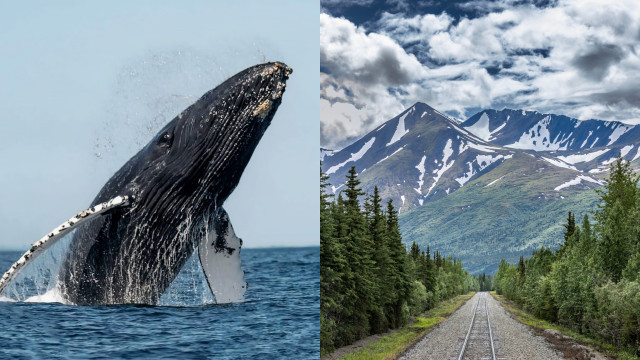
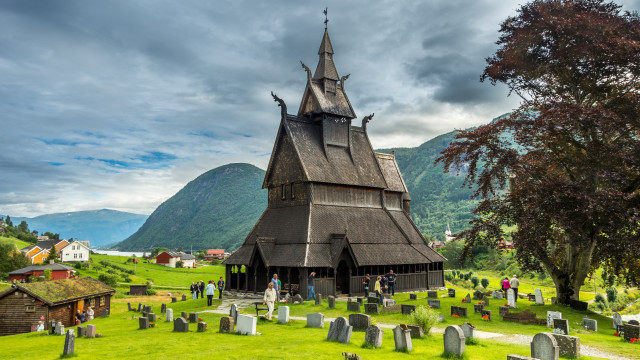
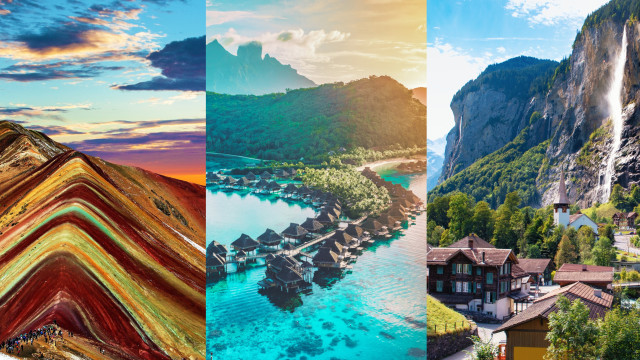

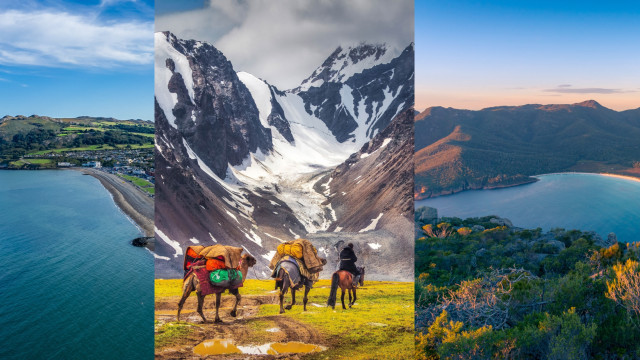
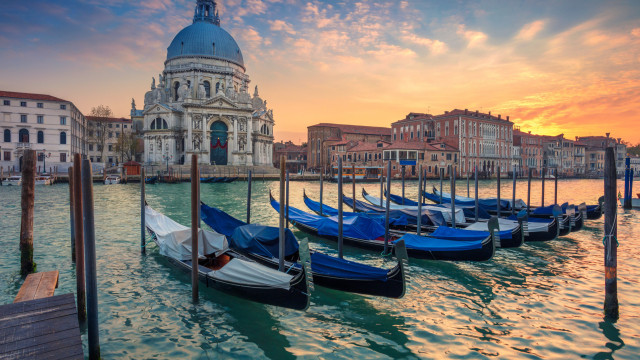
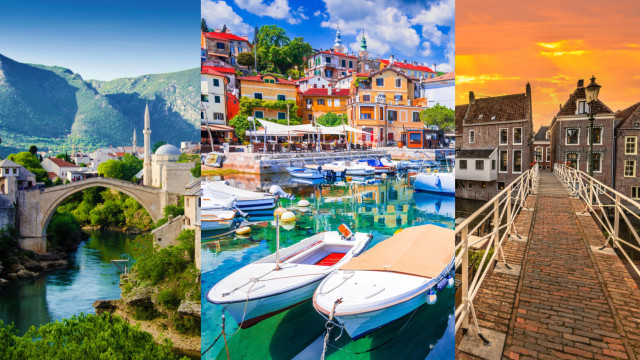
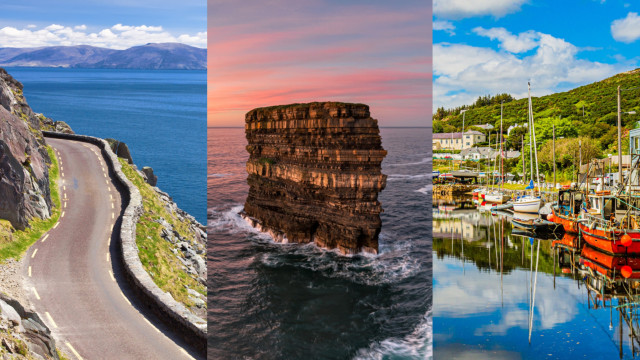








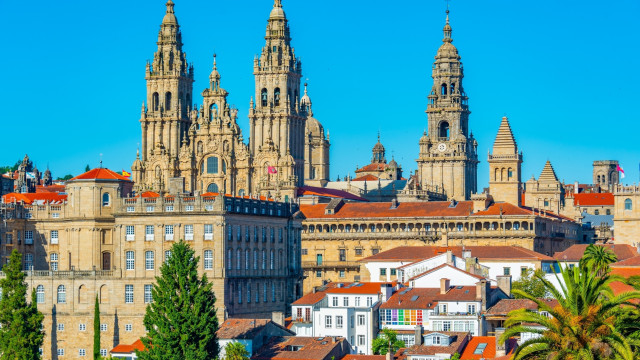





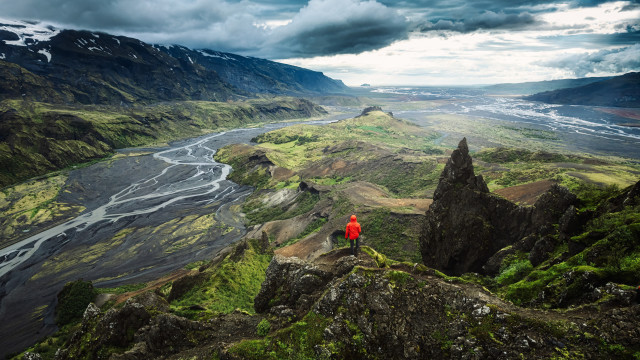
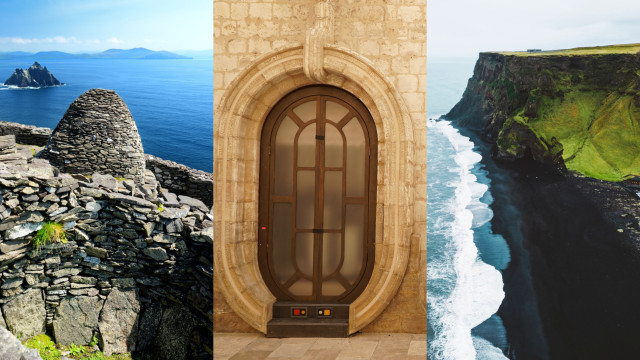











MOST READ
- Last Hour
- Last Day
- Last Week








